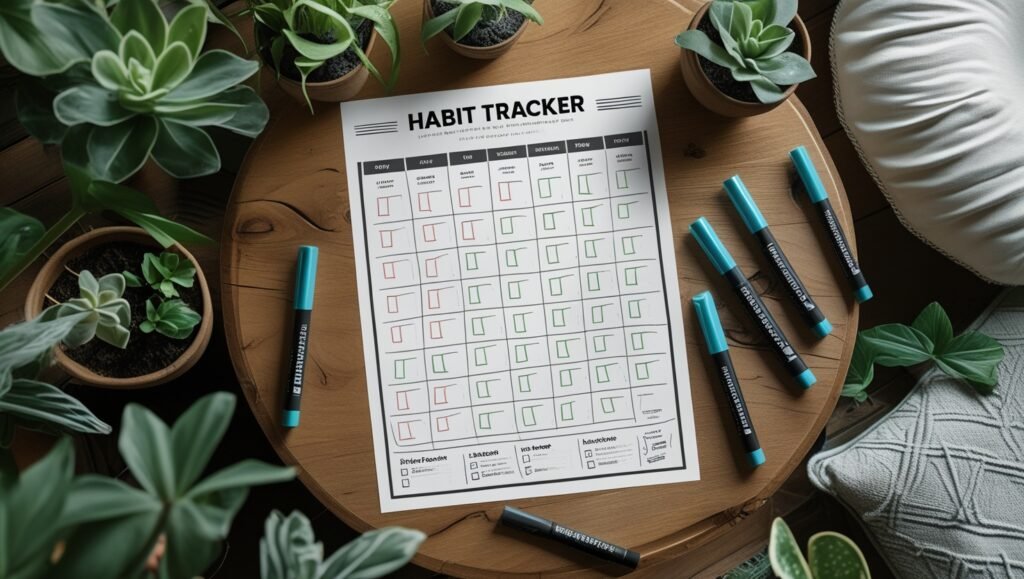Table of Contents
Introduction to Meditation For Anxiety
Do you ever feel like anxiety has a tight grip on your mind, making it hard to focus or relax? You’re not alone. Millions of people struggle with racing thoughts, stress, and overwhelming worry—but what if there was a simple, science-backed way to quiet the noise? Meditation, an ancient practice with modern relevance, can be a powerful tool for calming anxiety and restoring balance.
In this guide, we’ll explore how meditation rewires your brain to reduce stress, the most effective techniques for beginners, and practical tips to make it a seamless part of your daily routine. Whether you’re skeptical or simply unsure where to start, you’ll discover how even a few minutes of mindful breathing can shift your mental state. Ready to take back control? Let’s begin our journey with Meditation For Anxiety.

Meditation For Anxiety
Understanding Anxiety and How to use Meditation For Anxiety
Anxiety can feel like an invisible weight—constantly pulling at your thoughts, tightening your chest, and making even small decisions feel overwhelming. But what if you could train your brain to respond differently? Meditation isn’t just about sitting quietly; it’s a science-backed tool that reshapes how your mind processes stress.
What Happens in Your Brain During Anxiety?
When anxiety strikes, your brain’s amygdala (the fear center) goes into overdrive, triggering a flood of stress hormones like cortisol. This puts your body in “fight or flight” mode, leading to
- Racing thoughts
- Rapid heartbeat
- Shallow breathing
- Muscle tension
Meditation works by activating the prefrontal cortex, the part of your brain responsible for rational thinking and emotional regulation. Over time, this practice can
✔ Reduce amygdala reactivity
✔ Lower cortisol levels
✔ Improve emotional resilience
Scientific Evidence: How Meditation for anxiety relief occurs
Research shows that just 8 weeks of regular meditation can physically change your brain structure. Studies using MRI scans reveal that meditators have:
- Increased gray matter in areas linked to self-control
- Thicker cortical layers in regions tied to attention
- Reduced activity in the default mode network (the “worry circuit”)
A Harvard study even found that mindfulness meditation can be as effective as medication for some people with anxiety disorders. The best part? You don’t need hours of practice—just 5-10 minutes a day can start rewiring your brain.
Think about it: If anxiety is a storm, meditation for anxiety helps you become the calm at its center. Ready to learn how to tap into that peace? Let’s explore the most effective techniques of meditation for anxiety relief.
Different Techniques of Meditation for Anxiety Relief
Not all meditation is created equal—especially when it comes to anxiety relief. The right technique can feel like finding the perfect key to unlock deep calm. But with so many styles out there, where do you start? Let’s explore two of the most effective, research-backed methods to quiet an anxious mind.
Mindfulness Meditation: Staying Present to Reduce Worry
Mindfulness is the art of anchoring yourself in the now—because anxiety often lives in the “what ifs” of the future. Here’s how it works:
- Focus on Your Breath: Notice each inhale and exhale without trying to change it. When your mind wanders (and it will!), gently guide it back.
- Body Scan: Slowly bring attention to each part of your body, releasing tension as you go.
Why it helps anxiety:
- Breaks the cycle of overthinking by grounding you in the present
- Teaches you to observe worries without reacting to them
Pro tip: Start with just 5 minutes a day. Apps like Headspace or Insight Timer offer great guided sessions for beginners.
Guided Visualization: Using Imagery to Ease Stress
If your anxiety feels like a dark cloud, visualization helps you “see” your way to calm. This technique uses mental imagery to shift your emotional state.
Try this simple exercise:
- Close your eyes and picture a place that feels safe and peaceful (e.g., a beach, forest, or cozy room).
- Engage all your senses: Imagine the sounds, smells, and textures around you.
Science says visualization lowers cortisol levels and activates the parasympathetic nervous system—your body’s “rest and digest” mode.
Bonus: Pair it with calming music or nature sounds to deepen the effect.
Which Technique Should You Try First?
- If your anxiety is thought-driven (rumination, panic), try mindfulness.
- If you’re physically tense or need an emotional reset, opt for visualization.
Both methods train your brain to respond to stress with more clarity and less fear. Up next: How to build a meditation habit that actually sticks—even if you’re skeptical or busy.
How to Start a Meditation for Anxiety
You’ve heard the sentense “you can use meditation for anxiety relief”—but between a busy schedule and a restless mind, getting started might feel overwhelming. What if I told you that just 60 seconds of intentional breathing could shift your nervous system from panic to peace? Let’s break down exactly how to begin (no incense or perfect lotus position required).
Simple Steps to Begin Meditating Today
- Start Micro
- Begin with 1-3 minutes (yes, really!). This builds consistency without pressure.
- Try the “5-5-5” breath: Inhale for 5 counts, hold for 5, and exhale for 5. Repeat 3 rounds.
- Anchor Your Practice
- Pair meditation with an existing habit (e.g., after brushing your teeth or during your morning coffee).
- Use prompts: Set a gentle phone reminder or leave your meditation cushion in sight.
- Embrace the “Messy Middle.”
- Your mind WILL wander—that’s normal! The magic is in noticing and gently returning focus.
Pro Tip: If sitting still feels impossible, try walking meditation: Focus on the sensation of each footstep.
Creating a Consistent Routine for Long-Term Benefits
Meditation is like muscle-building for your mind—the more regularly you practice, the stronger your anxiety resilience becomes. Here’s how to stick with it:

✅ Track Progress
- Use a habit tracker app or journal to note:
- How you felt BEFORE vs. AFTER each session
- Any subtle shifts in anxiety levels over weeks
✅ Experiment with Timing
- Morning meditators often report calmer days.
- Nighttime practice can improve sleep (key for anxiety recovery). Learn more about sleep meditation.
✅ Find Your “Why”
- When motivation lags, reconnect to your reason:
“I meditate because 10 minutes of stillness saves me hours of spiraling.”
Did You Know? A 2023 study found that irregular meditators get only 30% of the anxiety-reduction benefits compared to those who practice consistently.
Hit a Roadblock? Try This:
- If you miss a day, do a single mindful breath instead of skipping entirely.
- Join a free online meditation challenge (like Insight Timer’s 7-day beginner series) for accountability.
Up next: We’ll troubleshoot common struggles—because everyone gets frustrated sometimes, and that’s part of the journey.
Common Challenges While Using Meditation For Anxiety Relief
Let’s be honest—meditation isn’t always sunshine and zen. Some days, your mind races like a hamster wheel, and sitting still feels impossible. But what if those struggles aren’t roadblocks but part of the process? Here’s how to navigate the most common meditation hurdles (because even seasoned practitioners face them).

Dealing with Restlessness and Distractions
You sit down to meditate, and suddenly:
- Your to-do list hijacks your attention
- An itch demands scratching right now
- Your legs won’t stop fidgeting
Try These Fixes:
🔹 The “Label and Release” Technique
When a distraction arises, mentally note it (“thinking,” “itching,” “planning”) and imagine placing it on a passing cloud.
🔹 Embrace Movement
Try:
- Walking meditation (focus on each step)
- Yoga nidra (a guided “sleep meditation” done lying down)
Know more about guided meditation.
🔹 Shorten Sessions
Can’t focus for 5 minutes? Do 1-minute “micro-meditations” throughout your day.
Remember: Restlessness often means your body is releasing pent-up stress—a good sign!
Managing Frustration When Progress Feels Slow
We expect meditation to work like an anxiety off-switch—but real change happens in subtle layers. If you’re thinking, “Is this even doing anything?” you’re not alone.
Shift Your Perspective:
✅ Look for Micro-Wins
- Slept slightly better?
- Noticed anxiety before it spiked?
- Paused before reacting to stress?
These are all signs of progress!
✅ Reframe “Failure”
Every time you notice your mind wandering and gently bring it back, you’re literally strengthening your brain’s focus muscles.
✅ Try the “5% Better” Rule
Aim for small improvements.
“Today, I’ll be just 5% gentler with myself when I get distracted.”
Science-Backed Insight: A 2022 study found that meditators who expected gradual progress stuck with practice 3x longer than those seeking quick fixes.
When All Else Fails:
- Change Your Anchor: If breath focus frustrates you, try listening to a singing bowl or staring at a candle flame.
- Laugh It Off: Can’t stop thinking? Smile and say, “Wow, my mind is *really* creative today!”
Up next: We’ll explore how to deepen your practice with advanced techniques of meditation for anxiety relief—but only when you’re ready. There’s no rush here.
Enhancing Your Meditation Practice for Better Results
You’ve mastered the basics—now it’s time to level up your meditation game. Think of this as fine-tuning your mental workout routine. Small tweaks can transform those quiet minutes from “nice to have” to “non-negotiable anxiety armor.” Ready to amplify your calm?
Combining Meditation with Breathing Exercises
Your breath is the remote control for your nervous system. Pair these powerful techniques with meditation for instant anxiety relief:
4-7-8 Breathing (The Natural Tranquilizer)
- Inhale deeply for 4 counts
- Hold for 7 counts
- Exhale completely for 8 counts
Why it works: Triggers parasympathetic response, lowering heart rate within minutes
Box Breathing (Navy SEAL Approved)
- Inhale (4s) → Hold (4s) → Exhale (4s) → Hold (4s)
Pro Tip: Use during stressful moments outside meditation too
Science Bonus: A 2023 study showed combining breathwork with meditation reduces anxiety symptoms 40% faster than meditation alone
Using Affirmations to Strengthen Calmness

Your anxious thoughts have a volume knob—affirmations help you turn it down. Try weaving these into your practice:
For Morning Meditation:
☀️ “I greet this day with calm and clarity”
For Anxiety Spikes:
🌀 “This feeling is temporary—I am safe in this moment”
How to Make Them Stick:
- Sync with Your Breath: Inhale the affirmation, exhale the doubt
- Engage Your Senses: Whisper aloud or trace words in sand
- Keep It Present Tense: “I am” works better than “I will”
Neuroplasticity Win: Repeating affirmations during meditation creates new neural pathways—essentially rewiring your brain’s anxiety patterns
Advanced Hack: The 3-Minute Reset
When anxiety strikes:
- Close your eyes (1 min of box breathing)
- Repeat your chosen affirmation 5x
- Visualize tension melting away
“It’s not about having time—it’s about making these tools automatic for when you need them most.”
Conclusion to Meditation For Anxiety Relief
So, where do you go from here? You’ve explored the science behind meditation for anxiety, experimented with techniques, and learned how to navigate the inevitable challenges. But the real magic happens when you take that first intentional breath—and then another.
Think of meditation as a lifelong conversation with your mind. Some days, it’s effortless; other days, it feels like wrestling with static. And that’s okay. The goal isn’t perfection—it’s progress. Every moment you choose stillness over stress, you’re rewiring your brain for calm.
Here’s Your Quick Recap:
✔ Meditation for anxiety isn’t a quick fix—it’s a practice that builds resilience over time.
✔ Small steps matter—even 60 seconds of mindful breathing creates change.
✔ Your struggles are part of the process—restlessness and frustration are signs you’re doing it right.
Now, imagine looking back a year from now. How different could your relationship with anxiety be if you committed to just 5 minutes a day? The science says: Significantly. Your nervous system says: Thank you.
Your Next Step?
👉 Pick one technique from this guide—whether it’s box breathing, affirmations, or a simple body scan—and try it today. Not tomorrow. Not when life calms down. Now.
Because here’s the truth: You don’t need more information. You don’t need a quieter life. You just need to start—exactly where you are, exactly as you are.
Your calm is waiting. All you have to do is breathe.
References
- Goyal, M., et al. (2014). “Meditation Programs for Psychological Stress and Well-being: A Systematic Review and Meta-analysis.” JAMA Internal Medicine, 174(3), 357–368. https://doi.org/10.1001/jamainternmed.2013.13018
- Hölzel, B. K., et al. (2011). “Mindfulness Practice Leads to Increases in Regional Brain Gray Matter Density.” Psychiatry Research: Neuroimaging, 191(1), 36–43. https://doi.org/10.1016/j.pscychresns.2010.08.006
- Kabat-Zinn, J. (2003). “Mindfulness-Based Interventions in Context: Past, Present, and Future.” Clinical Psychology: Science and Practice, 10(2), 144–156. https://doi.org/10.1093/clipsy.bpg016
- Khoury, B., et al. (2013). “Mindfulness-Based Therapy: A Comprehensive Meta-Analysis.” Clinical Psychology Review, 33(6), 763–771. https://doi.org/10.1016/j.cpr.2013.05.005
- Ma, X., et al. (2017). “The Effect of Diaphragmatic Breathing on Attention, Negative Affect and Stress in Healthy Adults.” Frontiers in Psychology, 8, 874. https://doi.org/10.3389/fpsyg.2017.00874
- National Center for Complementary and Integrative Health. (2021). “Meditation: In Depth.” https://www.nccih.nih.gov/health/meditation-in-depth
- Tang, Y.-Y., et al. (2015). “The Neuroscience of Mindfulness Meditation.” Nature Reviews Neuroscience, 16(4), 213–225. https://doi.org/10.1038/nrn3916
- Wielgosz, J., et al. (2019). “Mindfulness Meditation and Psychopathology.” Annual Review of Clinical Psychology, 15, 285–316. https://doi.org/10.1146/annurev-clinpsy-021815-093423




